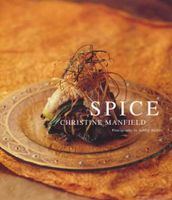Advertisement
Bay Leaf
Published 1999
The aromatic, green elongated bay leaf comes from the evergreen sweet bay tree native to the Mediterranean. Used since Roman times, when it symbolised victory and greatness and was used to crown emperors, poets and writers, the bay leaf is a compulsory ingredient in all European and Mediterranean cooking for flavouring stocks, sauces, soups, pickles, preserves, meats and vegetables. It is also an essential part of a bouquet garni, the classic herb combination of bay leaf, thyme and parsley. Bay leaves should be used sparingly to avoid bitterness and should be removed before serving. Prefer fresh bay leaves to dried — once dried, they lose their colour, fragrance and flavour. Bay leaves are also regarded as an appetite stimulant with digestive qualities. Available: widely.


